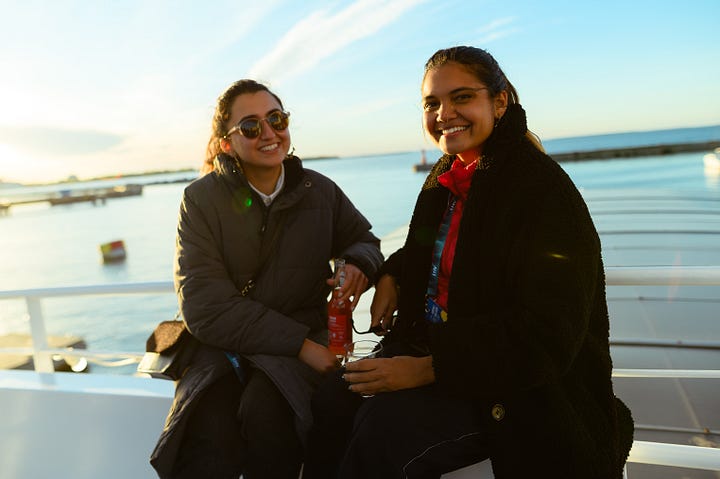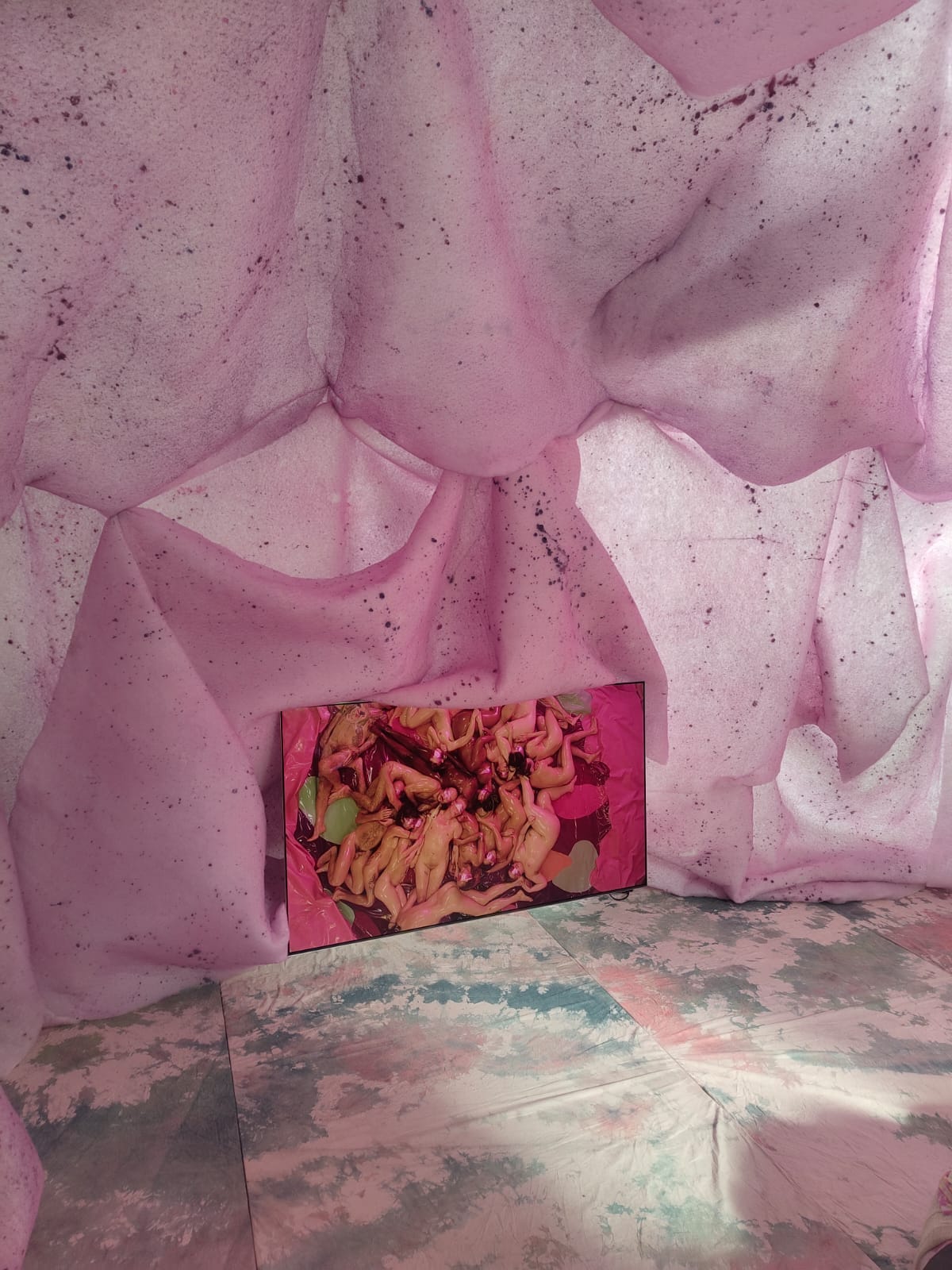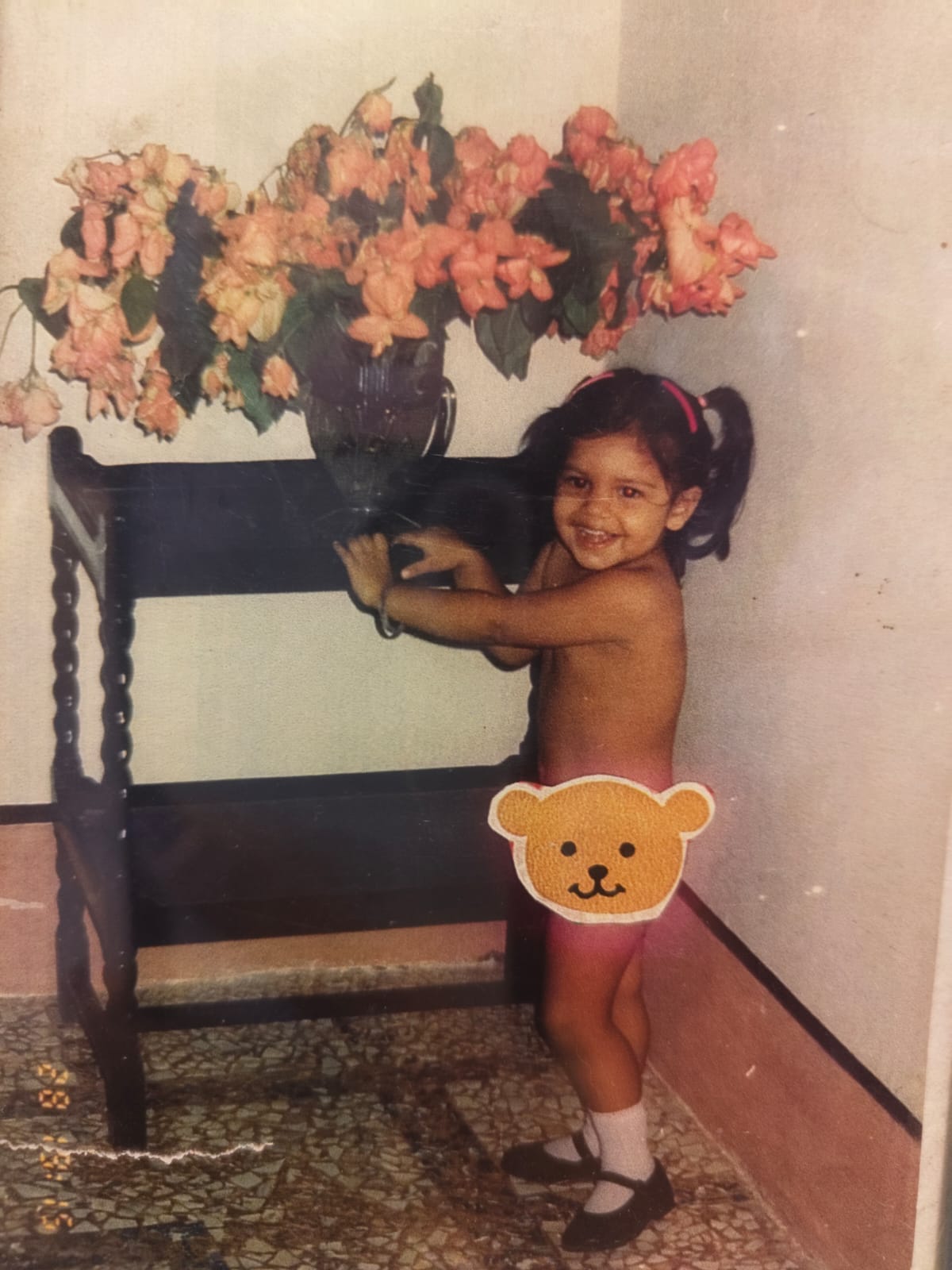A body in the sun
An Amsterdam Dispatch #2
I’m currently knee deep in boxes and bubble wrap as I pack to leave the beach town I have called my home for the last three and a half years. I am sure there will be more on this when I’m not racing against the clock to be out of here, whilst still wanting to have long walks, (slightly less) cold swims, slow brunches and iced coffees with friends and family before I leave.
So, while I’m trying to do the most, I’ve been handing over Brown Bodies to the people around me who I’ve been having conversations with around stuff this newsletter is about. I’m also using it as the perfect moment to start a new section on Brown Bodies — Your Voices (this needs a better name. Suggestions welcome, please!). Let me know what you think!
This week, I hand over to one of my best friends in the whole world, Gabriella D’Cruz, AKA my seaweed queen. She is a marine conservationist and seaweed harvester, and my go to on anything sustainability — if you’ve heard my reason for not eating tuna (‘Eating a tuna, is like eating a tiger’) it’s because I am Gabriella’s parrot. She runs Good Ocean which makes seaweed snacks for the Indian market. She also has a dog called Nori (I wasn’t joking when I said she was the seaweed queen).
We recently spent a gorgeous week together, pottering around the sweltering hot streets of Amsterdam. This is her take on one of her moments there. Over to Gabs and her first piece of writing that isn’t about seaweed!:


It's rush hour in Amsterdam and the city is heaving with cyclists, runners, small children and smaller dogs. Bodies in Amsterdam are all well dressed, important looking, and edgy. No one looks your way unless you’re in their bike lane.
I'm very aware of my body in cities — aware of people watching me and anxious when they get close enough to touch me. As most female presenting bodies in the world, I have experienced unwanted touch and my body is always awake to it.
Which is why I wasn't sure how to feel when walking into the Akinci Gallery to watch Thinking Through Touch, by Melanie bonajo — an exhibit my artist sibling took me along to. It explores the sensation of touch and what it means to different people. The film has scenes of naked bodies, covered in olive oil, slipping and sliding over each other. All kinds of bodies: trans bodies, big bodies, small bodies, old bodies, young bodies all merged together in this large multicoloured blob. You see a leg, then a boob, then a back, then a flaccid penis emerge from the structure which starts to resemble a churning, well kneaded lump of dough.
I thought that watching naked bodies would feel like looking at the sun — captivating until you’re forced to look away for respite. But the opposite happened. I was mesmerised. It's the first time I've seen naked bodies as people, and not as sexualised objects. I didn't feel like looking away.
I thought I would feel aroused. But that didn't happen either. On the contrary, seeing a person relaxed and naked, lying on the ground next to other naked people, made me feel very comfortable in my own body. It’s because the film portrayed an image of bodies being safe while also being completely exposed. Nudity is not permission to touch. It doesn’t mean availability. Being seen is not consent.
Identifying as female while growing up Catholic in India, meant that I was taught that nudity is shameful. When I saw a naked body as a child, I was expected to look away. I learnt at an early age that there were parts of my body that could be seen in public, and parts that never should be. Shame grew around these hidden parts of myself and, soon, I felt physically uncomfortable if any of them were made visible: the small bump of my left nipple through my shirt, the curve of my bum in my running tights, my belly button exposed to air when I reach for a supermarket’s top shelf. These parts being visible would leave my body strained, almost like it was trying to shield itself from some harmful invisible light.
And yet on the rare occasions that I have experimented with being naked in safe public spaces, I have felt so good in my body. I remember being at a spa in Germany where the initial anxiety of walking out of a changing room with no clothes on was soon replaced by a sense of ease. No one tried to cover their stretch marks, their pubic hair, or the fact that one boob was bigger than the other. It felt good to be in the presence of people unashamed of their bodies. It was incredibly freeing.
In other experiences, when touch has been consensual, it has been healing. Sex with my partner that makes me feel seen and heard. The hug from a friend that lasts a little longer because we both need it to. The steady weight of my dog's soft body against my abdomen when I'm crying on the sofa. The amniotic feel of the ocean.
So I find myself asking, when is my body just a collection of parts and when is it a sexual object? Is it both all the time and if so what sexualises a body? How I feel? How society feels about it? What role does shame play in all this?
I haven’t yet an answer to these questions. But I am asking them. And the people in Melanie Bonajo’s film gave me a glimpse of what it's like to feel free and safe in a body. It felt like an invitation to let go of the sharp and clawing sensation of shame around the beautiful, strong thing that is my body and let it lie down on a patch of grass in the sun.
A huge thanks to Gabriella for writing this week’s piece (and giving me time to procrastinate on packing!). I’m enjoying these pieces that open up conversation. Please have them with someone or come and write a response for Brown Bodies!






A beautiful, real reflection, Gabi! Thank you for sharing. I hope you'll keep writing.
Anisah: Where to next?